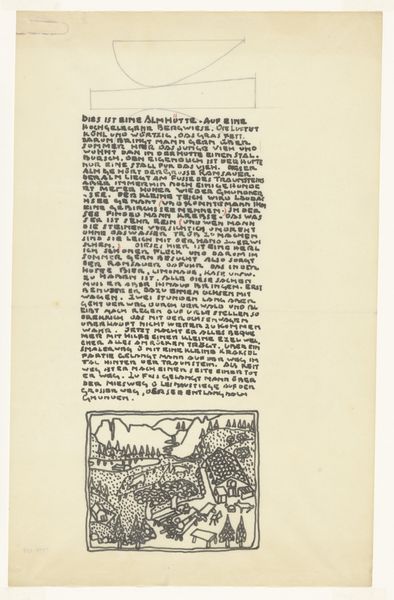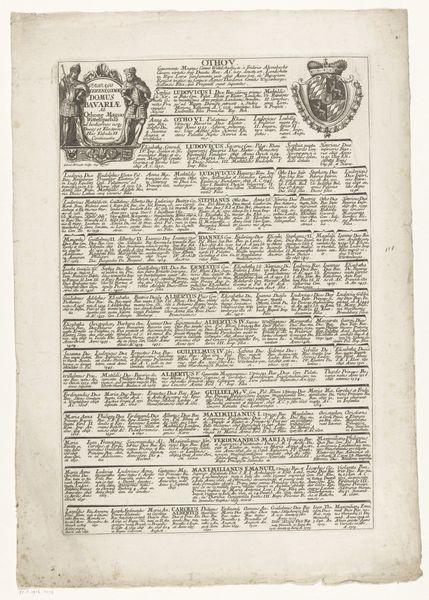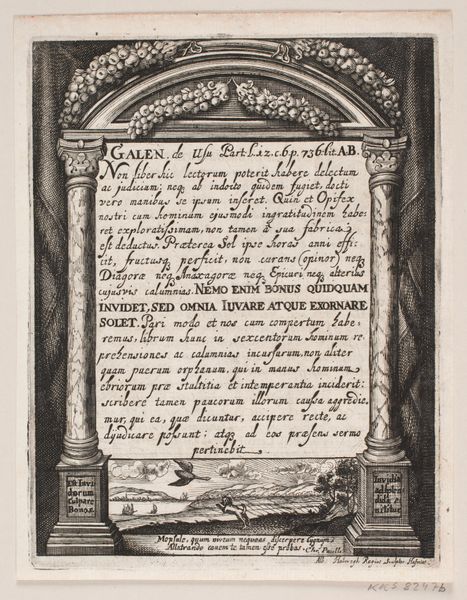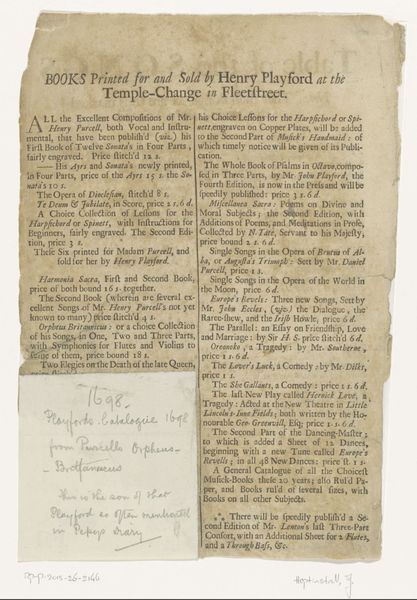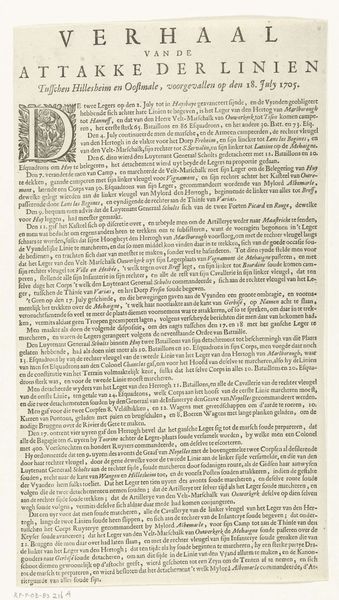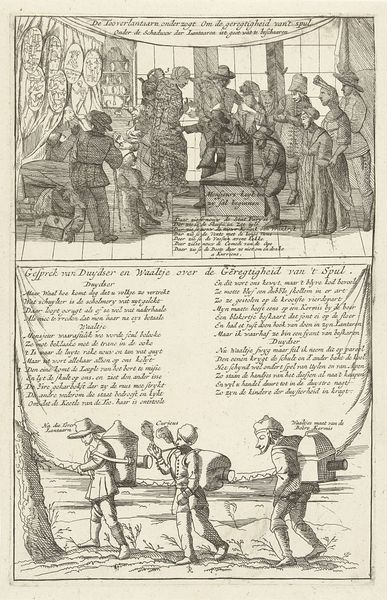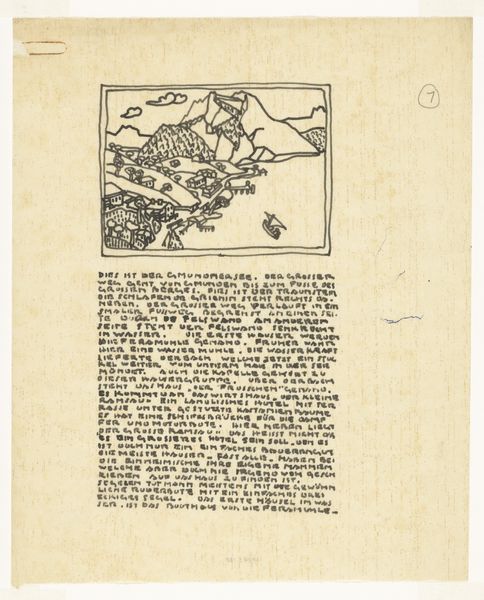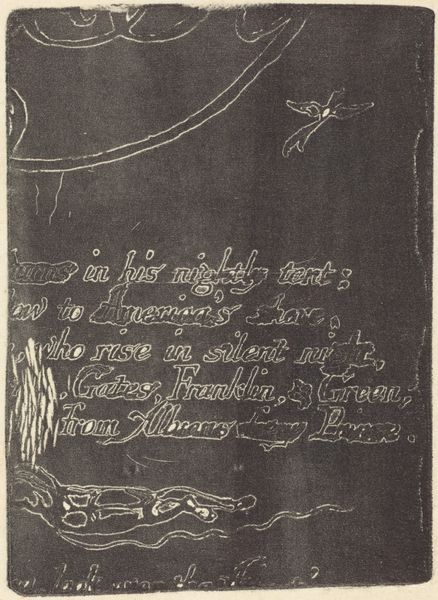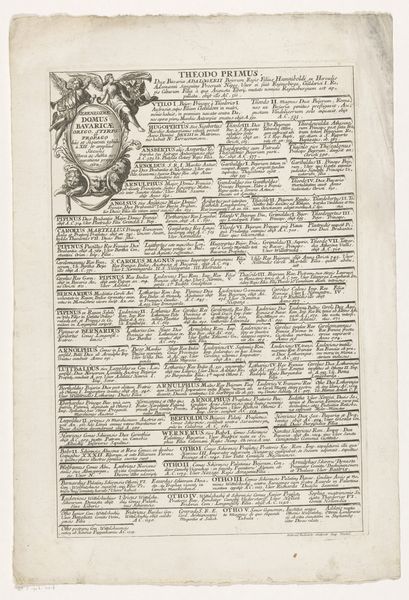
print, paper, ink, woodcut, engraving
# print
#
paper
#
text
#
ink
#
romanticism
#
woodcut
#
history-painting
#
engraving
Dimensions: plate: 13 x 10.6 cm (5 1/8 x 4 3/16 in.) sheet: 28.8 x 23.2 cm (11 5/16 x 9 1/8 in.)
Copyright: National Gallery of Art: CC0 1.0
This print, "On Homer's Poetry and On Virgil," was etched by William Blake in England, sometime around 1821. Blake, a visionary artist and poet, was deeply critical of the art establishment of his time. Here, he contrasts the classical ideals of Homer and Virgil, representing reason and order, with what he sees as the vitality of "Gothic" or northern European art. Blake’s views were shaped by the academic Royal Academy, which championed classical forms. Blake saw this as stifling imagination. Note how the text is densely packed, almost overflowing, challenging the neat, rational layouts of academic publications. Blake uses visual codes, like contrasting classical figures with more dynamic forms, to critique the institutions that promoted certain styles and suppressed others. To understand Blake better, look at the history of the Royal Academy. Consider how its emphasis on classical art influenced artistic taste and marginalized alternative visions. Blake's print encourages us to question the social forces that shape our understanding of art and its role in society.
Comments
No comments
Be the first to comment and join the conversation on the ultimate creative platform.
